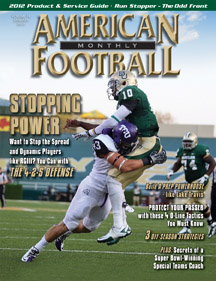Article CategoriesAFM Magazine
|
Stopping Power: Part I – Basics of the 4-2-5by: Frank DiCoccoAssistant Coach and Player Development Director, Stillman College © More from this issue Since the advent of the spread-offense, defensive coordinators at every level have been searching for a way to defend its pass-happy formations, while still being able to stop the run and gain the numbers advantage at the point-of-attack. Over the past decade, numerous schemes have been devised to stop the newest trends of offensive football. From variations of the traditional 4-3 and 3-4, to the creation of hybrid defenses like the 3-3 and 3-5, defensive signal-callers have come up with a myriad of ways to attack the spread. Perhaps the most effective approach, however, may be one which manages to employ the strengths of each of these defenses, while still being adaptable, learnable, and executable enough to be effective against virtually every style of offensive play. Enter the 4-2-5 defense. The 4-2-5 s....The full article can only be seen by subscribers.
|
|
|||||||
| HOME |
MAGAZINE |
SUBSCRIBE | ONLINE COLUMNISTS | COACHING VIDEOS |
Copyright 2025, AmericanFootballMonthly.com
All Rights Reserved





